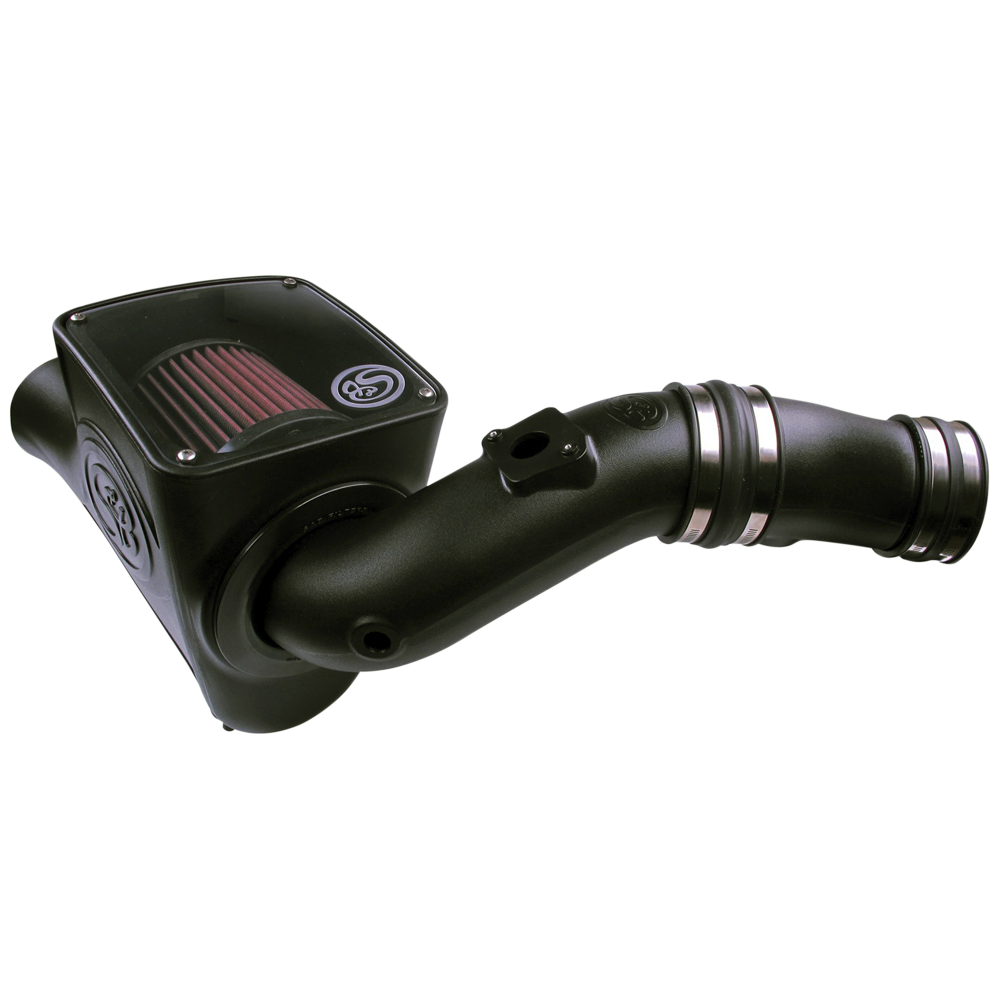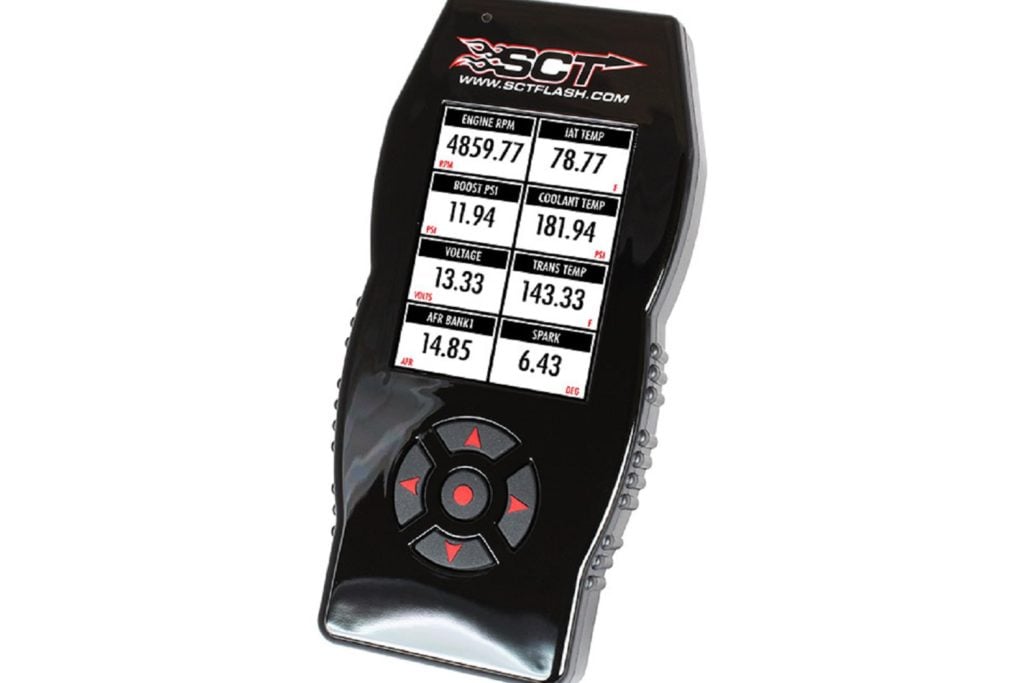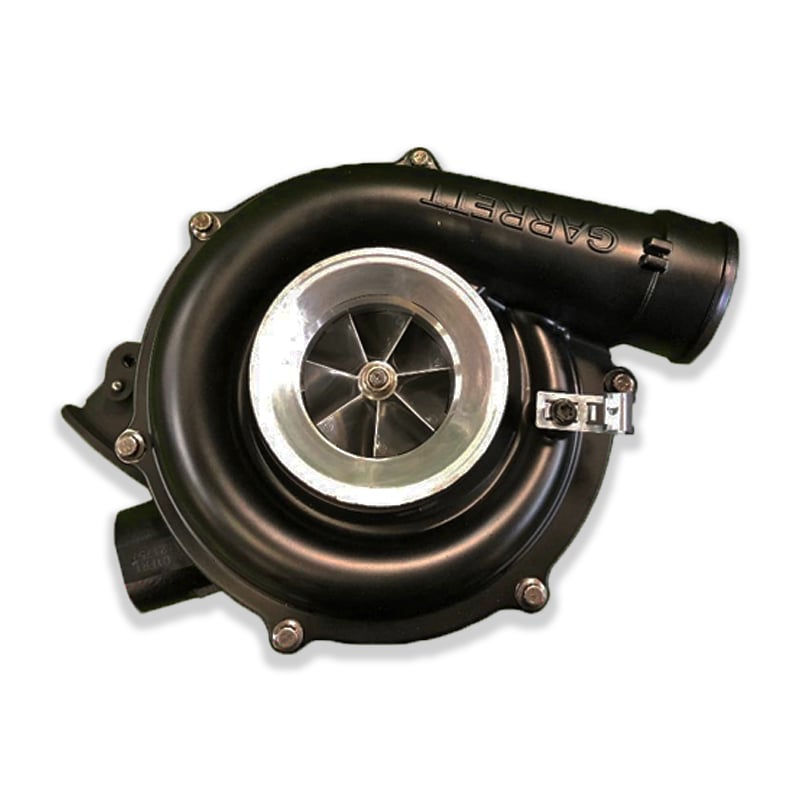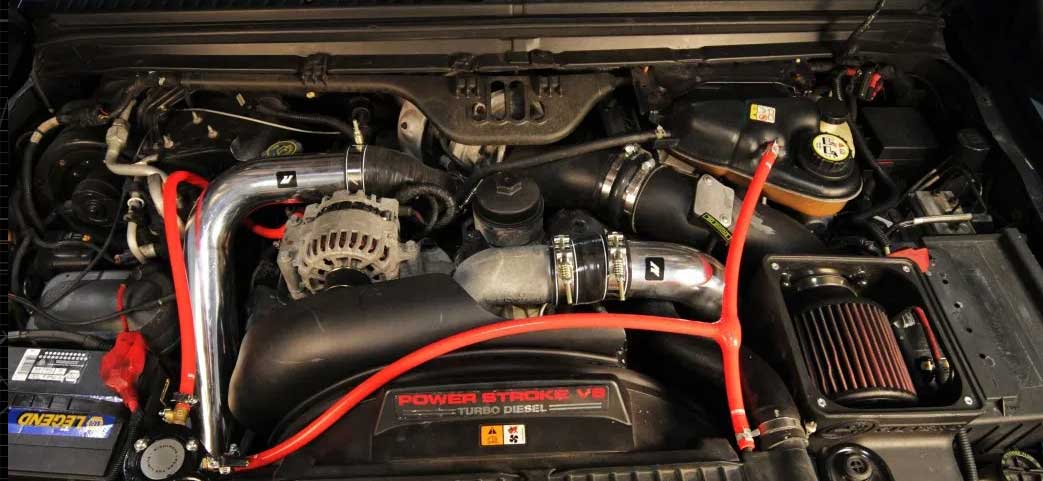In the world of high-performance cars, Ford has built quite a name for themselves in the last few decades with some special-edition coupes. From the supercharged Terminator Mustangs in the early 2000’s to the road-race inspired GT350 Mustang, Ford made sure everyone knew who was on top of the muscle car mountain. In the world of trucks, Ford also takes a win with the title of best-selling pickup in the US for the past 36 years, so you might think some of that “special sauce” they applied to their performance cars might make its way into the pickups as well, and you’d be right. Starting with the Lightning F-150 and later with the Raptor, quite a few Ford trucks have rolled off the assembly line with some high-performance upgrades. While the Lightning and Raptor are two very different trucks built for two very different purposes, they do have one thing in common: they’re ½ tons powered by a gasoline engine. Just because Ford never made a special edition high-performance diesel truck doesn’t mean you can’t build your own, in fact, many diesel owners have done just that. We’ve been taking an in-depth look at the best ways to add power to many kinds of late model diesel engines, and for the Ford guys, the 6.7 and 6.4 Powerstroke have great potential, but today we’re taking a crack at the smallest of them all, the Six Liter.
HEUI Six
Starting midway through 2003, Ford rolled out an all-new powerplant for use in its Superduty line of pickups, and it used a HEUI fuel injection system just like the 7.3 which preceded it. The 6.0 Powerstroke was manufactured by Navistar International, and has a displacement of 365 cubic inches, making it the smallest displacement diesel engine to be used by Ford in their heavy-duty trucks, but not the weakest. In order to produce its power output of 325 horsepower and 560-570 pounds of torque, the 6.0 needed to push lots of airflow through the engine and operate at a slightly higher RPM range. It made peak power at 3,200 RPM, which is about 500 higher than most other diesel V8’s.
To keep the airflow up, its design included four valves per cylinder and a single variable geometry turbocharger sitting on top of the valley. In terms of emissions controls, the six liter was equipped with a Diesel Oxidation Catalyst and an EGR system, and many enthusiasts argue the 6.0 V8 has the best sounding exhaust note of any diesel powerplant out there, and as you increase the power and RPM, the sound just keeps getting better. If you want to build a high-performance Ford, the 6.0 is a great engine to start with, but the question is: what to do first?
The Basics
Freeing up the airflow pathway into and out of the engine is a surefire way to increase the performance of any diesel engine, and a six liter is no different. When shopping for an intake system, just be sure to remember the importance of the “cold” part of cold air intake. While there are plenty of intake kits which increase power with a larger diameter tube, often you’ll see a filter placed on the end of that larger tube with no way to isolate the filter from heat. Ideally, you’ll want a filter which sits enclosed in an airbox, isolated from engine bay heat, and one that draws in cooler ambient air from outside the vehicle. The S&B Cold Air Intake kit does exactly that, and it comes with your choice of an oiled or dry filter.

For an exhaust, you’ll want to replace everything from the turbo back, and the choices you’ll need to make are what size pipe diameter, what material, and what type of sound. As far as diameter is concerned, if you only plan to take your truck to around 5-600hp, then a single 4” exhaust will get the job done just fine, and if you are planning on going a lot higher, you might as well install a 5” kit right out of the gate. If you live in a dry climate or are on a budget, an aluminized exhaust will save you a few bucks over stainless and still last a long time. If you drive on salted roads in the winter, live near the ocean, or want a great looking exhaust, stepping up to a stainless-steel system is key. And finally, if you want the whole neighborhood to know when your six liter fires up, a muffler might be optional for you, but if you commute every day, the straight pipe rumble can get annoying, so choose a muffler to keep your sanity intact. There are so many choices for exhaust, and to see all your options its best to start by visiting the 6.0 Powerstroke exhaust page of Diesel Power Products.
The majority of your initial power gains will come from altering your engine control module’s calibration which adds more fuel and air into the engine. When tuning your 6.0, you don’t have the option of using the EZ Lynk or EFI Live tuning platforms like some later model trucks, but that doesn’t mean custom tuning is out of the question, you just need the right hardware to get the tunes flashed into the truck. If you are starting with a basic street build, then an SCT X4 Flash Programmer is a great way to go. The device will come pre-loaded with a range of tunes which will work with your Powerstroke in any situation you might find yourself in, whether that’s daily driving, towing, or an “acceleration contest.” Later on, if you’ve added some more serious speed parts like bigger injectors and a larger turbocharger, a tuning shop can write you a custom tune file, and you will be able to reuse your SCT X4 to flash the custom tune into the truck just like before, and it can hold up to 10 custom tunes, so you can have the truck dialed in for any scenario.

Hold Down for What?
No discussion of the six-liter Ford would be complete without mentioning some of its serious shortcomings, and there are many well documented issues and fixes for this engine. We won’t get into most of those here, but the biggest things to worry about from a performance standpoint are the stock head bolts. It would be ill advised to throw the hot tune into a stock truck and put the hammer down, and that’s because the stock 14mm head bolts are a toque to yield design made from a less than ideal alloy, and they are near their limit of clamping pressure even at stock power levels. When cylinder pressure is increased and injection timing is advanced with a performance tune, the stock bolts are very prone to stretching, which causes the heads to lift slightly off the deck, and ultimately causing blown head gaskets. In order to minimize collateral damage, you should consider having some much stronger ARP head studs installed in your engine. There are two options for 6.0 Powerstroke studs; ARP2000 and the ARP Custom Age 625, and the main difference between the two is the tensile strength of the alloy. The 2000’s are rated at 200,000psi, and the CA625 are quite a bit stronger at 260,000 psi. If you have a stock turbo and tune with no plans to go much further, the 2000’s are a great choice, and are very affordable at just under $500 for the set. However, if you’re planning on installing a larger turbo and throwing in some bigger injectors, you’ll want to step up to the CA625’s to ensure those heads stay firmly planted onto the block.
Turbos and Stage Two
The great news about the six liter is once the head gasket issues are taken care of, you don’t have a lot to worry about since the stock rotating assembly is very strong. The small-bore and short stroke which makes power in the higher RPM ranges, the block has a bed-plate design which keeps the crankshaft right where it belongs, and the rods are massive compared to the Duramax. As such, its commonplace to take a Ford 6.0 deep into 700hp territory with stock pistons and rods, so really its just a matter of getting enough air and fuel into the engine to support your goals. The stock charger works great to around 475hp and can be pushed a bit further, but it’s running out of its efficiency zone and is on borrowed time. The Fleece Cheetah FWM turbo has a 63mm compressor wheel, but because of the variable vanes in the exhaust housing, it can still support 700hp while retaining its drop-in design, but to take full advantage of it on a 6.0, you’ll need to be running at least a 190cc injector. Speaking of which…

When you rate a common rail injector, you simply compare it to how much more fuel it flows than stock, like 40% over, 100% over and so on. Because the six liter is a HEUI design, it uses engine oil to hydraulically force fuel into the engine, and both the fuel and oil parts of the injector can be enlarged in a performance application. From the factory, the 6.0 is equipped with a 130cc injector, which is a measurement of the oil capacity of the plunger over 100 strokes. To get more fuel into the engine, you need more oil capacity, which is achieved by increasing the stroke of the plunger, and a larger nozzle to allow more fuel to flow into the engine in the correct amount of time. A great injector for a stock turbocharger and towing applications would be the Full Force 155/30 which has a 155cc plunger and a 30% larger than stock nozzle and will max out somewhere around 550whp. An injector of this size will work great with the stock high pressure oil pump and has great drivability, making a 155 great for a daily driver or work truck. If you want a little more fuel to push the larger Cheetah turbo, a Full Force 190/100 injector fits the bill with 650rwhp worth of fuel.
One key part of the HEUI system on a 6.0 is the injector driver module, or IDM. This sits on the driver’s side valve cover and it takes the low current signals from the ECM and translates them into high current power which actuates the solenoid on the injector. In addition to acting as a switch or relay, there is also a logic board inside the FICM which dictates injection pulsewidth and timing, and ultimately how much fuel enters the engine. The stock FICM is failure prone, and if/when it fails you can gain some horsepower by swapping it to a higher voltage and tuned FICM from BD-Power. The 58-volt driver allows the solenoids to open quicker and harder, and by tuning the logic board you can add an additional 40 to 100 horsepower depending on which type of tune you select. Once you have the injection parts handled, the rest is pretty standard diesel stuff: new manifolds and up-pipes can help spool-up and lower EGT, a better intercooler system will pull more heat away from the charge air. Remember: the lower the exhaust temp, the better.
C’mon Ford….
We may never see the day when a high-performance diesel sport truck rolls off the assembly line, but the good news is there’s no shortage of parts on the aftermarket to build your own.
The 6.0 is a great platform to start with since there are fewer emissions devices on board, the 5R110 transmission which came behind it is very strong, and it’s a very affordable platform to work with. With any diesel, the key is to increase airflow efficiency into and out of the engine, which allows you to fully utilize all the fuel you are injecting into the engine, for a cleaner and cooler running engine. When you combine that with the highest revving small block diesel Ford has produced, you’ll have a fun and affordable sport truck which is cooler than anything that rolled off any assembly line.


Looking to replace blown head gasket and upgrade to more hp for towing. I’ve got 180k on the engine. I’m ok with replacing heads and arp studs. Exhaust and air inlet. Could you recommend a package that would work. Nothing over the top as I want this to last awhile. Thanks, R.G. King
Fortunately, the 6.0’s have a ton of potential for making good, yet still RELIABLE power, to easily keep up with the newer, higher horsepower trucks. While you’re in there replacing the head gasket, below is a list of both replacement parts and some upgrades we would recommend. There’s a couple of options on the intake elbow and up-pipes as we’re not sure exactly what year 6.0 you have, and there are variants between 2003-2004 versus 2004.5-2007 models. If you have any questions, feel free to reach out:
ALLIANT Head Gasket kit w/ARP Studs: https://www.dieselpowerproducts.com/p-16836-alliant-head-gasket-kit-with-arp-head-studs-03-07-60l-ford-powerstroke.aspx
BD Exhaust Manifolds: https://www.dieselpowerproducts.com/bd-hd-exhaust-manifolds-03-07-powerstroke
BD Up-Pipes (03-04): https://www.dieselpowerproducts.com/p-14028-bd-power-powerstroke-up-pipe-kit-03-04-60l-ford-powerstroke.aspx
BD Up-Pipes (04.5-07): https://www.dieselpowerproducts.com/p-bd-power-powerstroke-up-pipe-kit-with-egr-045-07-60l-ford-powerstroke
MBRP 4″ Aluminized Exhaust w/Muffler: https://www.dieselpowerproducts.com/mbrp-s6212plm-exhaust-03-07-ford
S&B Cold Air Intake: https://www.dieselpowerproducts.com/p-4642-sb-cold-air-intake-03-07-60l-ford-powerstroke-75-5070.aspx
S&B Intake Manifold (03-04): https://www.dieselpowerproducts.com/sb-intake-manifold-03-04-ford-76-1003
S&B Intake Manifold (05-07): https://www.dieselpowerproducts.com/sb-intake-manifold-05-07-powerstroke
ALLIANT Oil Cooler: https://www.dieselpowerproducts.com/p-14317-alliant-ap63451-engine-oil-cooler-kit-03-07-60l-ford-powerstroke.aspx
Is there a chip available for this engine
I have a 2006 f350 6.0 Dually with 347k miles that was just given to me! I sure could use some advice on how to make it a much better and stronger truck for towing a 20k fifth wheel as I am a mobile millwright and I go where the work is and I want to make both the engine and transmission better and stronger!